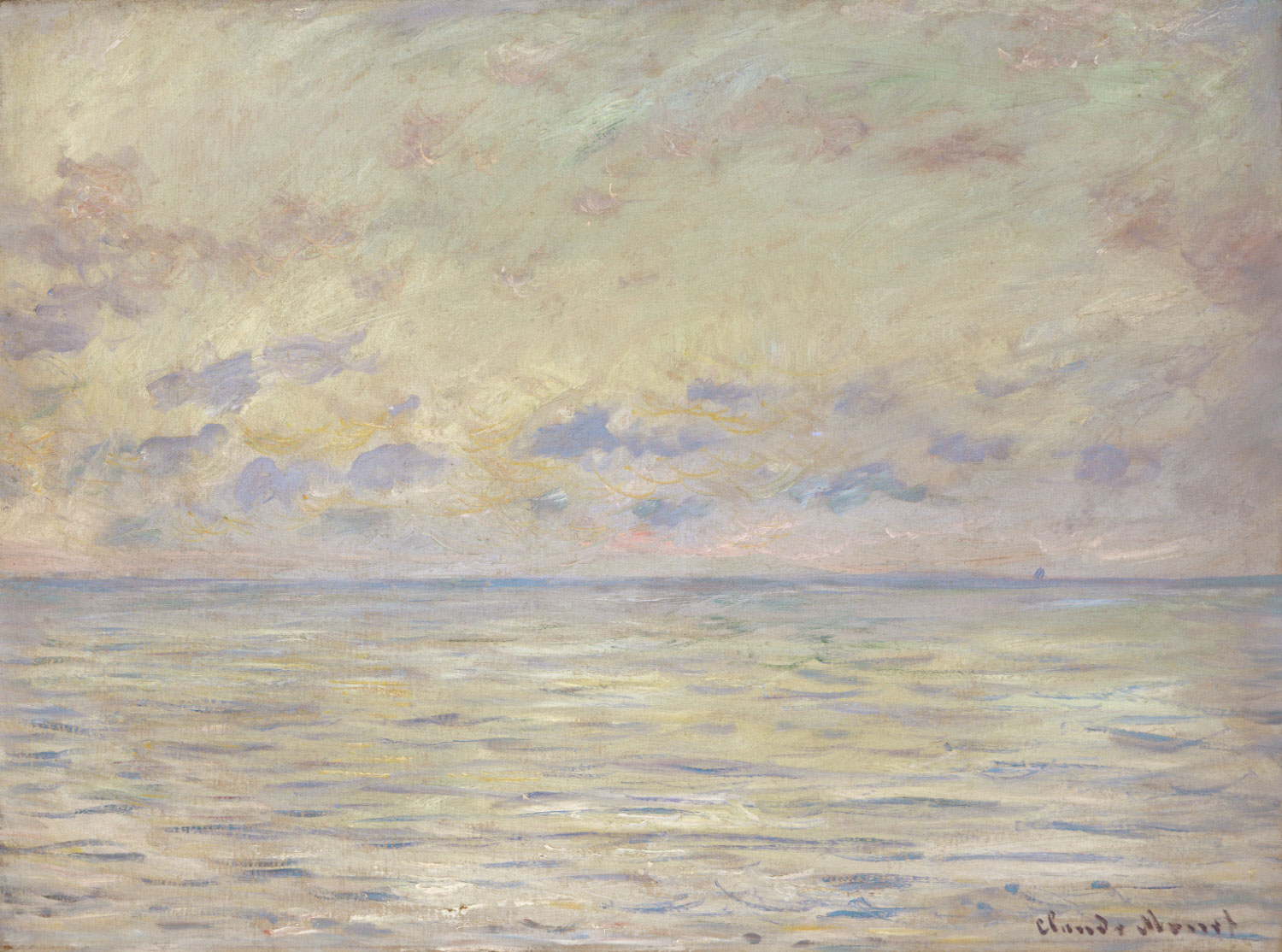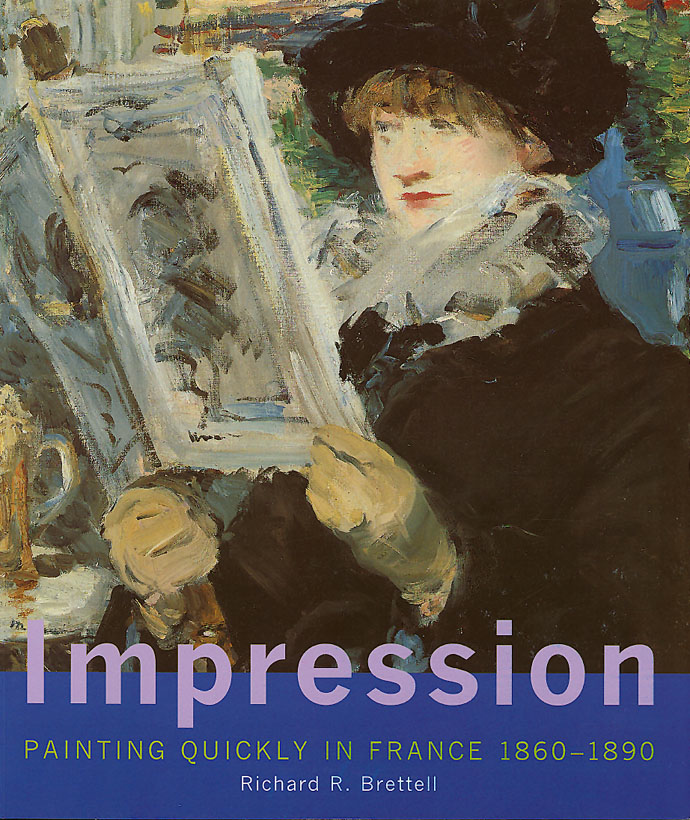
june 17–september 9, 2001
claude monet
No artist is more fully associated with the Impression than Claude Monet (1840-1926). He began to paint rapidly executed, gestural paintings by the mid-1860s and took out-of-door, direct painting to new heights in 1868-69 with such works as Bathers at La Grenouillère. Unlike earlier Impressions, where Monet had segregated color areas in carefully composed patterns, here he covered the surface of the canvas with hundreds of individual touches of paint and scattered color everywhere. Monet completely dissolved the distinction between figure and ground, describing each with paint strokes of equal thickness and directional power. This energy is present in other paintings by Monet in this exhibition, which feature such diverse subjects as figures on a beach, seascapes, the bridges of Argenteuil, and train stations.
Like his colleague Renoir, Monet mastered this kind of painting early in his career but favored reworking his canvases from the 1880s onward. Monet came to understand that rapid painting did not necessarily mean entrapping nature's fleeting effects. An apparent desire for an objective painting of light led him away from the personal and psychologically expressive kind of painting associated with the Impression.

Claude Monet
French, 1840-1926
Marine near Etretat
1882
Oil on canvas
21 1/2 x 29 inches
Philadelphia Museum of Art. Bequest of Mrs. Frank Graham Thomson

The "point" of Impressionist art was to capture the fleeting moment, the transient effect of a certain place, person, or time. Impressionist artists worked on-site with speed and directness, hoping to distinguish their works with a new freshness, immediacy, and truthfulness. Yet the paintings they exhibited were in fact almost always completed in the studio later. This beautifully illustrated book investigates for the first time the works that might truly be called "Impressions"—paintings that appear to be rapid transcriptions of shifting subjects but were nonetheless considered finished by their makers. Renowned Impressionist scholar Richard R. Brettell identifies and discusses Impressions by some of the best-known artists of the period, including Manet, Monet, Renoir, Sisley, Morisot, Degas, Pissarro, and Caillebotte.
The book surveys the various practices of individual artists in the making, signing, exhibiting, and selling of Impressions. Brettell discusses the pictorial theories behind the paintings, the sales strategies for them, and the various forms they took, including works completed in one sitting, "apparent" Impressions, and repeated Impressions. In a concluding chapter, the author considers a small group of works by Vincent van Gogh, who painted with an almost fanatical rapidity and was the only major Post-Impressionist painter to push the aesthetic of the Impression even further.
This book is the catalogue for an exhibition at the National Gallery in London from November 1, 2000, to January 28, 2001, the Van Gogh Museum in Amsterdam from March 2 to May 20, 2001, and the Clark Art Institute from June 17 to September 9, 2001.
240 pages, 9 3/8 x 11 inches
183 color and six black-and-white illustrations
2000
Published in association with Yale University Press
ISBN 0-300-08446-3 (hardcover)
ISBN 0-300-08447-1 (softcover)
